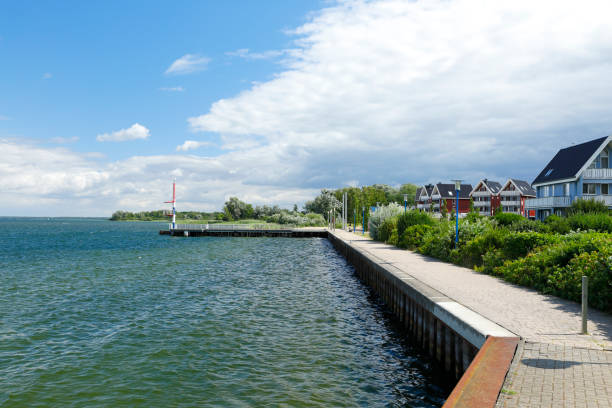Turning the Tides: How Waterfront Properties are Shaping Real Estate Investments
The lure of waterfront properties has always been potent, offering a mix of serene views, recreational opportunities, and a lifestyle that's unmatched by urban living. However, beyond the allure of these picturesque locations, how are waterfront properties impacting the real estate investment landscape? Here, we delve into the unique dynamics of waterfront real estate, providing a comprehensive overview of its historical significance, current trends, and future prospects.

Understanding the Charm of Waterfront Properties
Waterfront properties have long been coveted real estate assets, their appeal dating back to ancient civilizations that thrived on the banks of rivers and coasts. Historically, these properties have offered strategic advantages, such as accessibility to trade routes and abundant natural resources. Over time, the draw of waterfront living has evolved, with modern buyers seeking tranquility, privacy, and a sense of connection to nature.
Current Market Dynamics of Waterfront Real Estate
Today, waterfront properties continue to command premium prices, often significantly higher than comparable inland properties. The demand remains robust, fueled by affluent buyers seeking luxury residences, retirees looking for serene locations, and investors attracted to the high rental yields and potential capital appreciation.
Despite the ongoing COVID-19 pandemic, the waterfront real estate market has proven resilient, with many buyers seeking refuge in less crowded, scenic locations. Interestingly, the shift to remote work has also fueled demand, as more people are now able to live further away from city centers.
The Investment Angle: Advantages and Challenges
Investing in waterfront properties can offer several advantages. Besides the potential for higher rental income and capital appreciation, these properties also tend to hold their value better during market downturns, offering a degree of stability.
However, investing in waterfront real estate also comes with its unique challenges. These properties are often subject to stricter zoning laws and environmental regulations, which can limit development opportunities. They also tend to require higher maintenance due to exposure to harsher weather conditions. Moreover, insurance costs can be higher due to the increased risk of natural disasters such as floods and hurricanes.
The Long-Term Outlook: Climate Change and Waterfront Properties
The long-term prospects of waterfront real estate are increasingly being shaped by climate change. Rising sea levels and increased frequency of extreme weather events pose significant risks to these properties. Consequently, investors need to factor in these risks when making investment decisions, potentially resulting in a shift in demand dynamics in the future.
Key Takeaways for Real Estate Investors
Waterfront properties offer unique investment opportunities, characterized by strong demand, premium pricing, and potential for high returns. However, they also present distinctive challenges that require careful consideration. As the impact of climate change becomes more pronounced, investors will need to stay vigilant, adopting a forward-thinking approach that balances the allure of waterfront living with the realities of a changing climate.
In conclusion, while waterfront properties continue to shape the real estate investment landscape, their future trajectory will be influenced by a multitude of factors, ranging from market dynamics to environmental changes. As always, successful real estate investing will require a keen understanding of these factors, coupled with a strategic and well-informed approach.





